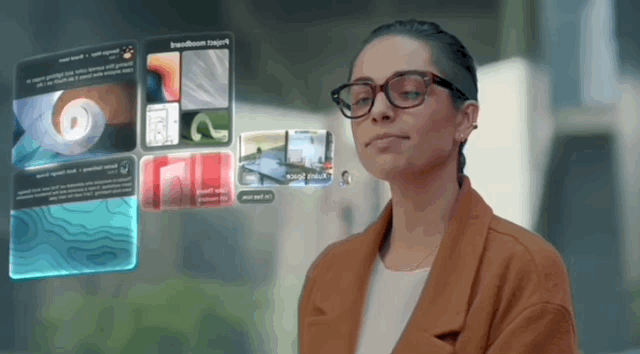The Metaverse is the talk of the town— from entertainment to fashion, this technology is fundamentally changing how people and brands interact. But how different is education in the metaverse?
Here are three ways in which the Metaverse is adapting itself to students’ needs and opening the doors to better learning experiences for students. Let’s start with how it imparts experiential learning experiences that positively impact students.
The metaverse improves the online learning experience
After teaching online for more than a year during the pandemic, Jeremey Bailenson, the Thomas More Storke Professor in Stanford’s School of Humanities and Sciences, decided to break out of the Zoom grid.
He took his Virtual People course into the Metaverse and enabled students to “learn by doing” so they could build applications, perform experiments, and experience historical events they could only read about earlier.
Students who signed up for the course got VR headsets and created virtual avatars for sessions they’d attend from home. Thus equipped, students attended virtual field trips, built interactive virtual reality scenes, and participated in group discussions.

Axon Park & BodyMap
Students noted that the change in discussion format allowed everyone to interact without being left out, improving their engagement in classrooms. They also discovered new passions and developed a new worldview after going through an immersive learning experience.
For instance, Allison Lettiere, a computer science graduate, said that learning in the Metaverse dispelled notions that it was only for games and one of the classes helped her cultivate more racial empathy as it put her in the shoes of a black person in society.
Compare this virtual learning experience to a lesson on racial empathy taught in a traditional Zoom class. To start with, a Zoom class environment isn’t conducive to learning as it lacks the look and feel of in-person learning and doesn’t give leeway for discourse due to technical limitations.
There’s no way to feel connected with classmates and teachers, and the desire for learning plummets which affects students’ grades. Apart from this, students are also continuously bombarded with distractions from social media and online games.
So, even if students paid attention in the online class and had a discourse about racial empathy, it wouldn’t be as effective as the experiential learning experience that the Metaverse provides.
The metaverse promotes inclusivity in the classroom
“Having an inclusive classroom should not be something people have to ask for, it should be something students can expect.” ~ Erica Chenworth (Faculty, Harvard Kennedy School)
Inclusivity is a widely discussed topic, but schools seldom implement it in virtual classrooms as they’re primarily focused on tackling other issues like classroom engagement. As a result, kids with disabilities can’t keep up with their peers as they’re left in a lurch.
This is where Metaverse technology comes in. Over the years, AR, MR and VR (collectively XR) has evolved rapidly, and today, specific programs help kids who have special needs to participate with their classmates and learn rapidly. Here are a few ways in which the Metaverse is promoting accessibility and inclusivity in online classrooms:
1. Helps visually impaired kids with sensory enhancement
Ensuring that visually impaired students feel seen and heard in an online classroom setting is extremely hard as documentaries and concepts that require visual explanation aren’t accessible to them. As a result, they may fall behind their classmates in their grades and comprehension.
The Metaverse tackles this with features like haptic feedback, audio-echo location and audio descriptive menus. In other words, if a visually impaired student is amidst the reenactment of a historical event, they can feel the presence of artifacts and locate the characters by listening to sounds in a 3D environment.
2. Re-enacts social communication for kids with autism
Having a normal conversation may be a piece of cake for neurotypical kids. But the same doesn’t hold true for kids on the autistic spectrum, as these kids find social interactions overpowering and difficult.
However, a key to overcoming these challenges can be repeatedly practicing these interactions in a safe environment. For example, projects like VOISS (Virtual Reality Opportunities to Integrate Social Skills) help students improve their social skills by taking them through social situations that require them to interact with other characters to solve problems.
3. Uses visual imagery to teach hearing and speech-impaired students
Kids with hearing and speech disabilities struggle to communicate with their peers and understand lessons.
Metaverse technology can improve the communication and comprehension problem by translating gestures into speech (and vice versa) and using a set of VR images processed through a program to teach kids. So, for instance, if the students had to be taught to spell out names, they’d feed it to the software, and it would convert the name into gestures, or haptic feedback experiences, the students would understand.
The metaverse makes learning accessible to everyone
With staggering costs of online tuition and increased travel costs, students worldwide are losing access to quality education from top universities, which affects their mental health and future career opportunities.
But the Metaverse is devoid of geographical borders, so students from any part of the world can attend lectures in the virtual university, participate in discussions, and socialize with their peers, regardless of their time zone.

Meta
This not only helps cut down on accommodation, travel, and food costs but also helps the working populace structure their day around work and other daily responsibilities.
What’s more is that if you’re experiencing FOMO about missing out on networking events, parties and concerts, you can attend these events in the Metaverse itself.
There may also be fewer language barriers when meeting new people as the technology can immediately translate what the other person is saying, for example in the professor’s lecture, into the student’s native language and display them as subtitles.
In short, the Metaverse gives students the “university” experience sans the traveling and allows them the flexibility of fitting classes into their schedule regardless of where they are.
The metaverse will transform learning
Educational institutions worldwide are slowly opening their doors to new educational experiences and providing a safe and inclusive environment for students to learn, thanks to the Metaverse.
This new system is taking online learning to the next level by providing students the opportunity to learn from anywhere according to their schedule. So, they don’t have to pawn their mental health to financial worries and upskilling amidst a busy schedule.
Although the technology behind the Metaverse is still in a nascent state and what will be its future remains to be seen, the upsides are definitely exciting. Let’s embrace it and start creating more innovative learning experiences for students of all abilities and backgrounds.
Feature image credit Nathan Watson



